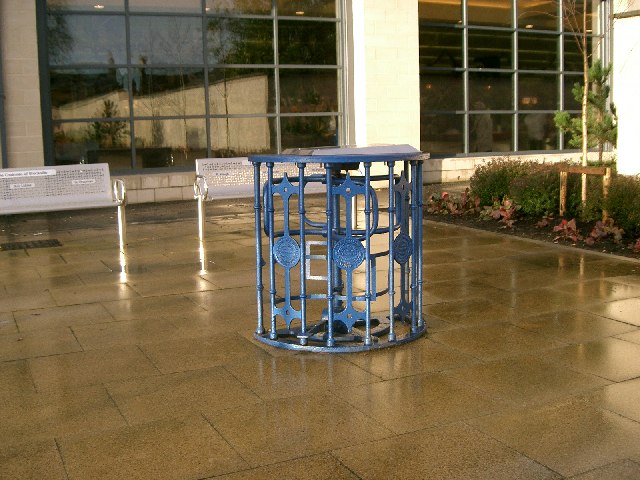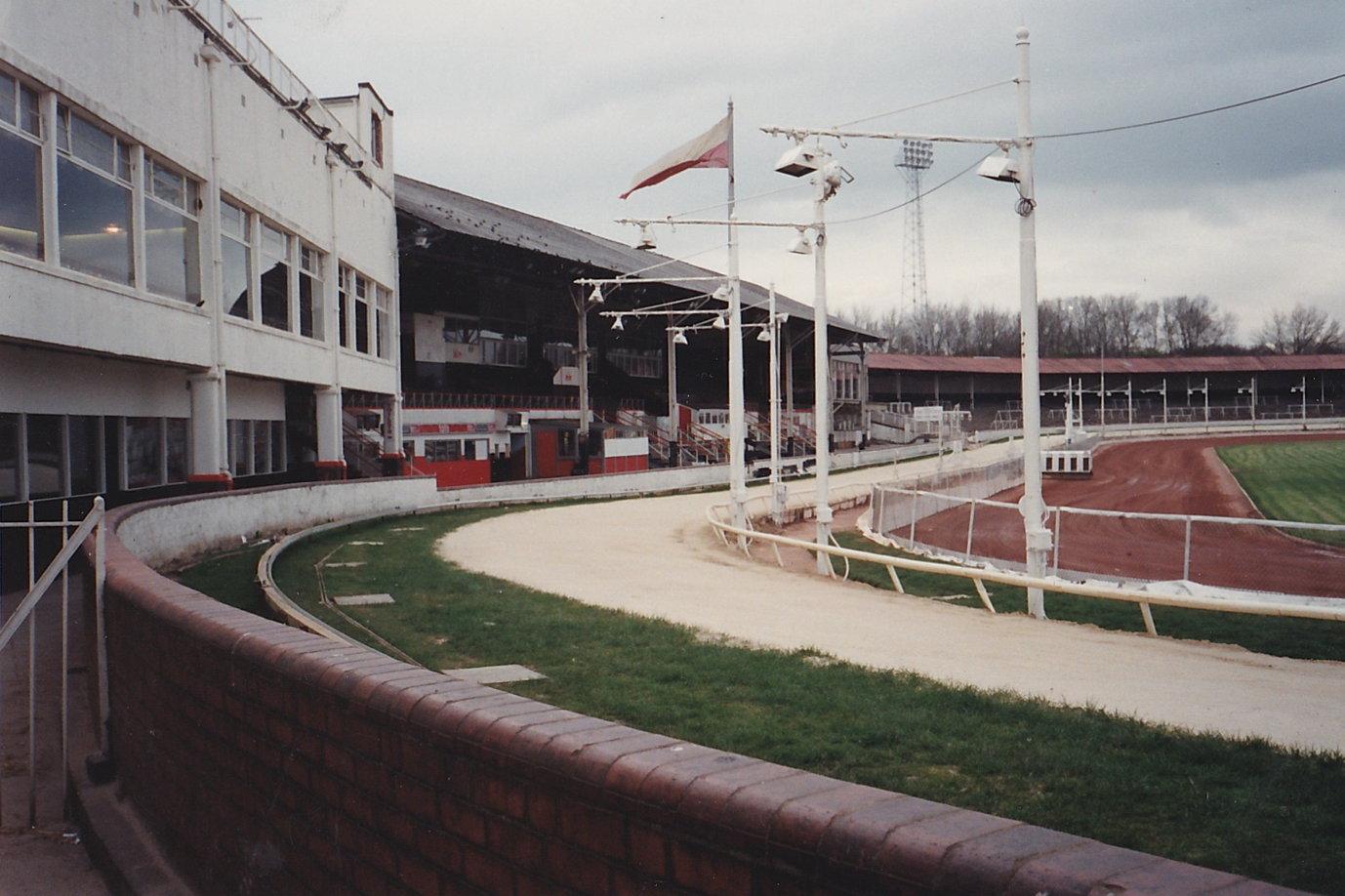|
1904–05 Aberdeen F.C. Season
Aberdeen F.C. competed in the Scottish Football League Division Two and the Scottish Cup in season 1904–05. Overview Season 1904–05 was Aberdeen's second season and their first in Scottish League football. They failed to gain election to Division One in 1904, but successfully applied to join Division Two. The team abandoned their white jerseys for a new black and gold strip this season. The Pittodrie attendance record was broken in January when 16,000 spectators watched as Glasgow club Queen's Park visited Aberdeen in the Scottish Cup. In the league, Aberdeen finished seventh out of twelve clubs. In the cup, they won through to round three after wins over Queen's Park and Bathgate, but lost to Third Lanark at Cathkin Park. Tom Ruddiman finished as the club's top scorer with ten goals from 15 appearances. Results Scottish Division Two Final standings Scottish Cup Squad Appearances & Goals References * {{DEFAULTSORT:1904-05 Aberde ... [...More Info...] [...Related Items...] OR: [Wikipedia] [Google] [Baidu] |
Jimmy Philip
Jimmy Philip (1863 – 12 October 1930) was the first coach of Scottish football club Aberdeen F.C. He was in charge of the club virtually from its foundation in 1903 until his retirement in 1924. Early life Philip was the only son of four children. His father James Philip (born 1833) and mother Jane Philip (born 1830) were both Brass Founders. Their daughters Jane Philip (1861) Eliza Philip (1864) were both Envelope Makers and the youngest Isabella (1872) was a scholar. Philip married Mary Ann Forsyth (1864–1937) and had five children: James, Dot, Lily, Mary and George John (1905–1972). Philip was a native Aberdonian, he had a wide range of sporting interests, and he had proposed to underwrite the first overseas tour by a Scottish international team. He was also a referee, although by profession he was a wood-turner. [...More Info...] [...Related Items...] OR: [Wikipedia] [Google] [Baidu] |
Douglas Park
Douglas Park was a football stadium in Hamilton, South Lanarkshire, the home ground of Hamilton Academical from 1888 to 1994. The stadium holds the record for Hamilton Academical's largest ever attendance, 28,690 people against Hearts in 1937. Douglas Park also played host to Clyde between 1991 and 1994, as that club awaited the building of their new ground in Cumbernauld, Broadwood Stadium. Hamilton ceased playing first team matches at Douglas Park at the end of the 1993–94 season. The club continued to use the stadium for reserve team matches until January 1995, as the sale of the ground was not completed until December 1994. Douglas Park was then redeveloped as a Sainsbury's supermarket. Turnstiles were sold to Falkirk and part of the main stand was sold to Auchinleck Talbot for £30,000. The only part of the old ground that Hamilton Academical retained was the floodlights. A new stadium, called New Douglas Park, was built immediately next to the old site. See also ... [...More Info...] [...Related Items...] OR: [Wikipedia] [Google] [Baidu] |
Brockville Park
Brockville Park was a football stadium located on Hope Street in Falkirk, Scotland, north-west of the town centre. It was the home of Falkirk F.C. from 1885 until the end of 2002–03 Scottish football season.50 Fascinating Falkirk Facts , stforum.co.uk. Retrieved 2011-06-26. The record attendance at Brockville Park was 23,100 on 21 February 1953 in a match against .Team Profile & History , Scottish Premier League. Retrieved 2011-06-26. [...More Info...] [...Related Items...] OR: [Wikipedia] [Google] [Baidu] |
Leith Athletic F
Leith (; ) is a port area in the north of Edinburgh, Scotland, founded at the mouth of the Water of Leith and is home to the Port of Leith. The earliest surviving historical references are in the royal charter authorising the construction of Holyrood Abbey in 1128 in which it is termed ''Inverlet'' (Inverleith). After centuries of control by Edinburgh, Leith was made a separate burgh in 1833 only to be merged into Edinburgh in 1920. Leith is located on the southern coast of the Firth of Forth and lies within the City of Edinburgh council area; since 2007 Leith (Edinburgh ward), it has formed one of 17 multi-member Wards of the United Kingdom, wards of the city. History As the major port serving Edinburgh, Leith has seen many significant events in Scottish history. First settlement The earliest evidence of settlement in Leith comes from several archaeological digs undertaken in The Shore, Leith, The Shore area in the late 20th century. Amongst the finds were medieval wharf ... [...More Info...] [...Related Items...] OR: [Wikipedia] [Google] [Baidu] |
Arthurlie F
Arthurlie is an area of the town of Barrhead, East Renfrewshire, Scotland. History of Arthurlie The lands of Arthurlie were held in medieval times by the Stewart family, a branch of the noble Stewarts of Darnley. Later the lands became the property of Allan Pollock, Esq. and remained in his family for several generations before being inherited by Gavin Ralston of Woodside in Beith.Pride, David (1910). ''A History of the Parish of Neilston''. Pub. Alexander Gardner, Paisley. Facing p 137. The area has long been associated with the legends of King Arthur.Pride, David (1910). ''A History of the Parish of Neilston''. Pub. Alexander Gardner, Paisley. p 138. The name means 'Arthur's meadow.'Johnston, James B. (1903), ''Place-Names of Scotland.'' Pub. David Douglas, Edinburgh. P. 19. Arthurlie was a barony of considerable extent, however it eventually came to be purchased by Henry Dunlop Esq. in 1818 from Gavin Ralston, a distant relative. The Dunlop family ran Gateside Cotton Mill ... [...More Info...] [...Related Items...] OR: [Wikipedia] [Google] [Baidu] |
Albion Rovers F
Albion is an alternative name for Great Britain. The oldest attestation of the toponym comes from the Greek language. It is sometimes used poetically and generally to refer to the island, but is less common than "Britain" today. The name for Scotland in most of the Celtic languages is related to Albion: ''Alba'' in Scottish Gaelic, ''Albain'' (genitive ''Alban'') in Irish, ''Nalbin'' in Manx and ''Alban'' in Welsh and Cornish. These names were later Latinised as ''Albania'' and Anglicised as ''Albany'', which were once alternative names for Scotland. ''New Albion'' and ''Albionoria'' ("Albion of the North") were briefly suggested as names of Canada during the period of the Canadian Confederation. Francis Drake gave the name New Albion to what is now California when he landed there in 1579. Etymology The toponym in English is thought to derive from the Greek word , Latinised as (genitive ). The root ' is also found in Gaulish and Galatian 'world' and Welsh (Old W ... [...More Info...] [...Related Items...] OR: [Wikipedia] [Google] [Baidu] |
Stark's Park
Stark's Park is a football stadium in Kirkcaldy, Scotland. It is the home ground of Raith Rovers, who have played there since 1891. The ground has an all-seated capacity of . History Raith started using the ground in 1891 and it seats . It is located in Kirkcaldy, Fife. The park can clearly be seen from the railway line on the route between Edinburgh and Aberdeen. The unusual L-shaped main stand that houses the players dressing facilities and the supporters lounge was designed by the renowned ''Grandstand'' architect Archibald Leitch and was built with part funding from the sale of Alex James to Preston North End in 1925. Other funding came from a loan scheme that was not finally paid off until 1946. The terracing was open to the elements except for a covered enclosure affectionately known as the "coo shed" which stood opposite the main stand and ran approximately two-thirds of the length of the pitch. The ash and railway sleeper terracing which surrounded all sides of the ... [...More Info...] [...Related Items...] OR: [Wikipedia] [Google] [Baidu] |
Shawfield Stadium
Shawfield Stadium is a venue in the Shawfield district of the town of Rutherglen, South Lanarkshire, Scotland, located close to the boundary with Glasgow. Originally a football ground, Shawfield was home to Clyde F.C. from 1898 to 1986. Greyhound racing was introduced in 1932, and the stadium hosted the Scottish Greyhound Derby from 1970 to 1985 and from 1989 to 2019. The Glasgow Tigers (speedway), Glasgow Tigers speedway team were also based there, from 1988 to 1995 and 1997 to 1998, with the Edinburgh Monarchs, Scottish Monarchs also racing there in 1996. Other sports including boxing and sport of athletics, athletics were also staged at Shawfield. On 19 March 2020, an announcement was made to suspend racing because of the COVID-19 pandemic. In the following two years the majority of trainers moved their greyhounds to other venues as the track became derelict. During October 2022, the stadium's owner Billy King died, ending the likelihood of it ever reopening. Greyhound Ra ... [...More Info...] [...Related Items...] OR: [Wikipedia] [Google] [Baidu] |
Somerset Park
Somerset Park is a football stadium located in Ayr, South Ayrshire, Scotland. It has been the home of Scottish Championship team Ayr United since the club was founded in 1910. Prior to that, it was the home ground of Ayr, who merged with Ayr Parkhouse to form Ayr United. The 10,185 capacity stadium was designed by renowned football stadium architect Archibald Leitch. After an impressive season in 2017–2018 by Ayr United, debate and discussion began regarding the possibility of Ayr United being promoted to the Scottish Premiership and whether Somerset Park would be eligible for Premiership matches. It was later confirmed that under current league requirements, Ayr United would be allowed to play matches at Somerset Park with minimal improvements to its facilities should they gain promotion to the SPFL Premiership, as the more stringent seating capacity regulations had been removed some years earlier. The stadium has hosted a number of international football fixtures, mostl ... [...More Info...] [...Related Items...] OR: [Wikipedia] [Google] [Baidu] |
Ayr F
Ayr ( ; ; , meaning "confluence of the River Àir"), is a town situated on the southwest coast of Scotland. A former royal burgh, today it is the administrative centre of South Ayrshire Council, and the historic county town of Ayrshire. With a population of 46,982, Ayr is the 15th largest settlement in Scotland and second largest town in Ayrshire by population. The town is contiguous with the smaller town of Prestwick to the north. Ayr submitted unsuccessful bids for city status in 2000 and 2002, and as part of the wider South Ayrshire area in 2022. Ayr was established as a Royal Burgh in 1205 and is the county town of Ayrshire. It served as Ayrshire's central marketplace and harbour throughout the medieval period and was a port during the early modern period. On the southern bank of the River Ayr sit the ramparts of a citadel constructed by Oliver Cromwell's men during the mid-17th century. Towards the south of the town is the birthplace of Scottish poet Robert Burns in ... [...More Info...] [...Related Items...] OR: [Wikipedia] [Google] [Baidu] |
East Stirlingshire F
East is one of the four cardinal directions or points of the compass. It is the opposite direction from west and is the direction from which the Sun rises on the Earth. Etymology As in other languages, the word is formed from the fact that east is the direction where the Sun rises: ''east'' comes from Middle English ''est'', from Old English ''ēast'', which itself comes from the Proto-Germanic *''aus-to-'' or *''austra-'' "east, toward the sunrise", from Proto-Indo-European *aus- "to shine," or " dawn", cognate with Old High German ''*ōstar'' "to the east", Latin ''aurora'' 'dawn', and Greek ''ēōs'' 'dawn, east'. Examples of the same formation in other languages include Latin oriens 'east, sunrise' from orior 'to rise, to originate', Greek ανατολή anatolé 'east' from ἀνατέλλω 'to rise' and Hebrew מִזְרָח mizraḥ 'east' from זָרַח zaraḥ 'to rise, to shine'. ''Ēostre'', a Germanic goddess of dawn, might have been a personification of bot ... [...More Info...] [...Related Items...] OR: [Wikipedia] [Google] [Baidu] |




